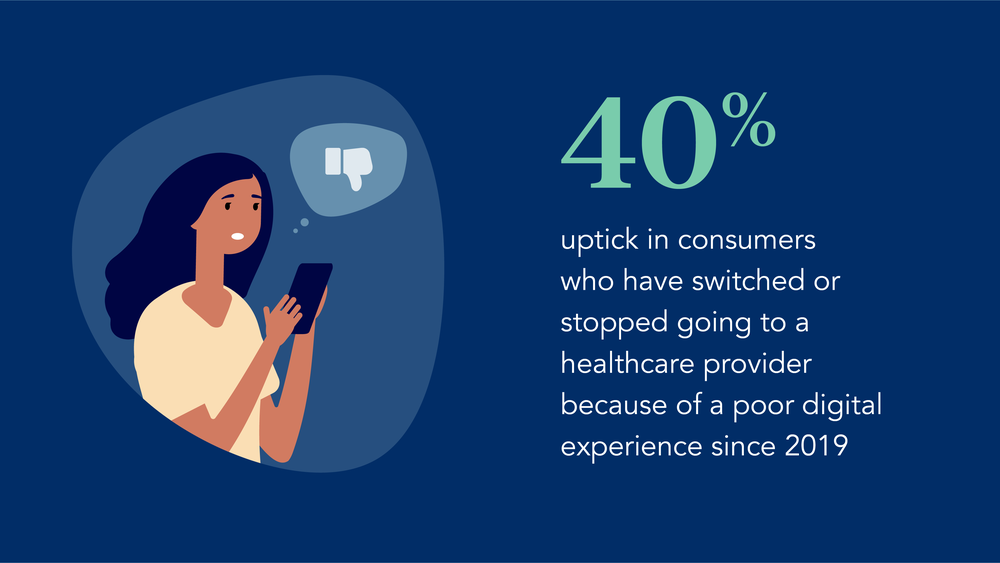When it comes to the future of healthcare, meeting (and exceeding) consumer preferences around digital experiences is no longer optional for competitive healthcare providers. Americans increasingly want a clear, cohesive and safe end-to-end patient journey. Between new legislation, the challenges posted by COVID-19 and rapidly shifting consumer expectations, the task of humanizing and modernizing the patient experience could not be more urgent.
According to our second annual Healthcare Consumer Experience Study, conducted by Forrester Consulting, the future of healthcare needs to be transparent, touchless and personalized. To contextualize these evolving expectations, we can point to companies offering best-in-class digital experiences that have become the yardstick against which all companies are measured; about half of patients say they wish digital healthcare experience was smoother and more intuitive, similar to experiences with Amazon, Netflix or Uber.
Against the backdrop of the COVID-19 pandemic, digital impressions matter more than ever before—28% of consumers have switched or stopped going to a healthcare provider because of a poor digital experience, a 40% increase from 2019. And when it comes to billing, even more patients are using digital tools: text message use alone has grown by over 200% in the past year, while email and patient portal use have grown by 82% and 34%, respectively.
With this increased digital engagement, we see a corresponding rise in expectations around digital healthcare options; like last year, nearly one-third of patients don’t believe their healthcare providers have done enough to improve their patient billing and payment processes. And a majority (68%) believe it’s important that healthcare providers enable more engagement customization options for communication, bill pay, scheduling and more.
In short, despite the advances in virtual care brought on by COVID-19, providers still have a long way to go to meet consumer expectations and preferences. As digital tools become increasingly important to discriminating consumers, tools for the digital patient journey will become a key and increasingly important differentiator between providers of choice and the rest of the pack.



